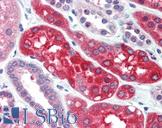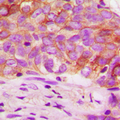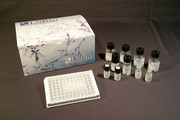Login
Registration enables users to use special features of this website, such as past
order histories, retained contact details for faster checkout, review submissions, and special promotions.
order histories, retained contact details for faster checkout, review submissions, and special promotions.
Forgot password?
Registration enables users to use special features of this website, such as past
order histories, retained contact details for faster checkout, review submissions, and special promotions.
order histories, retained contact details for faster checkout, review submissions, and special promotions.
Quick Order
Products
Antibodies
ELISA and Assay Kits
Research Areas
Infectious Disease
Resources
Purchasing
Reference Material
Contact Us
Locations
Orders Processing,
Shipping & Receiving,
Warehouse
2 Shaker Rd Suites
B001/B101
Shirley, MA 01464
Production Lab
Floor 6, Suite 620
20700 44th Avenue W
Lynnwood, WA 98036
Telephone Numbers
Tel: +1 (206) 374-1102
Fax: +1 (206) 577-4565
Contact Us
Additional Contact Details
Login
Registration enables users to use special features of this website, such as past
order histories, retained contact details for faster checkout, review submissions, and special promotions.
order histories, retained contact details for faster checkout, review submissions, and special promotions.
Forgot password?
Registration enables users to use special features of this website, such as past
order histories, retained contact details for faster checkout, review submissions, and special promotions.
order histories, retained contact details for faster checkout, review submissions, and special promotions.
Quick Order
| Catalog Number | Size | Price |
|---|---|---|
| LS-C128905-50 | 50 µg | $489 |
Polyclonal Rabbit anti‑Human EZR / Ezrin Antibody (WB) LS‑C128905
Polyclonal Rabbit anti‑Human EZR / Ezrin Antibody (WB) LS‑C128905
Antibody:
EZR / Ezrin Rabbit anti-Human Polyclonal Antibody
Application:
WB
Reactivity:
Human, Monkey, Bovine, Dog, Horse, Pig
Format:
Unconjugated, Unmodified
Toll Free North America
 206-374-1102
206-374-1102
For Research Use Only
Overview
Antibody:
EZR / Ezrin Rabbit anti-Human Polyclonal Antibody
Application:
WB
Reactivity:
Human, Monkey, Bovine, Dog, Horse, Pig
Format:
Unconjugated, Unmodified
Specifications
Description
Ezrin antibody LS-C128905 is an unconjugated rabbit polyclonal antibody to Ezrin (EZR) from human. It is reactive with human, bovine, dog and other species. Validated for WB.
Target
Human EZR / Ezrin
Synonyms
EZR | CVIL | Cytovillin | CVL | p81 | VIL2 | Villin 2 (ezrin) | Villin-2 | Cytovillin 2 | Ezrin
Host
Rabbit
Reactivity
Human, Monkey, Bovine, Dog, Horse, Pig
(tested or 100% immunogen sequence identity)
Clonality
IgG
Polyclonal
Conjugations
Unconjugated
Purification
Immunoaffinity purified
Modifications
Unmodified
Immunogen
Synthetic non-phosphopeptide corresponding to human Ezrin around the phosphorylation site of tyrosine 353 (Q-D-YP-E-E).
Specificity
Recognizes human Ezrin. Species cross-Reactivity: mouse.
Applications
- Western blot (1:500 - 1:1000)
Usage
Suitable for use in Western blot: 1:500-1:1000.
Presentation
PBS (without Mg2+, Ca2+), pH 7.4, 150 mM NaCl, 0.02% Sodium Azide, 50% Glycerol
Storage
May be stored at 4°C for short-term only. Aliquot to avoid freeze-thaw cycles. Store at -20°C. Aliquots are stable for up to 1 year.
Restrictions
For research use only. Intended for use by laboratory professionals.
About EZR / Ezrin
Publications (0)
Customer Reviews (0)
Featured Products
Species:
Human, Monkey
Applications:
IHC, IHC - Paraffin, Western blot, Peptide Enzyme-Linked Immunosorbent Assay
Species:
Human, Monkey, Mouse, Rat
Applications:
Western blot, ELISA
Species:
Human, Mouse, Rat, Bovine, Pig, Chicken, Zebrafish
Applications:
IHC, IHC - Paraffin, Western blot, Immunoprecipitation
Species:
Human, Mouse, Rat
Applications:
Western blot, Peptide Enzyme-Linked Immunosorbent Assay
Species:
Human, Bovine, Pig, Chicken, Zebrafish
Applications:
Western blot
Request SDS/MSDS
To request an SDS/MSDS form for this product, please contact our Technical Support department at:
Technical.Support@LSBio.com
Requested From: United States
Date Requested: 4/18/2024
Date Requested: 4/18/2024














